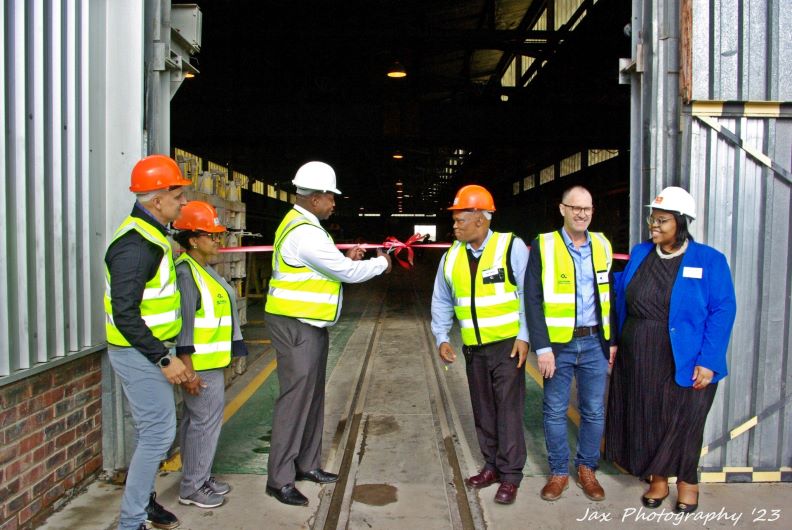
Colossal Concrete Products’ De Aar precast concrete manufacturing plant re-opened on 12 October. Having been spun off from Grinaker LTA, the company has a 64-year history as a prominent manufacturer of pre-stressed concrete railway sleepers – as well as other precast concrete products – in South and Southern Africa. This is Part 1 of a three-part article.
Colossal has developed over 40 railway-related products; as well as producing poles and masts, large diameter pipes and culverts, enclosures and other specialised items.
Gwen Mahuma-Madida, CEO of Colossal Concrete Products, explains that in June 2021 a consortium made up of Colossal Africa Group, Mafoko Holdings, Clone Capital and Randvest Capital made the pivotal acquisition of Aveng Infraset’s Brakpan and De Aar facilities for their rail, telecommunications, civil engineering and specialised precast concrete manufacturing capabilities and intellectual property (IP).
Chris Klagsbrun, sales director of Colossal Concrete Products, says: “The business has grown successfully over the past two and a half years, reaching a pivotal point on 12 October 2023 with the re-opening of the previously mothballed De Aar precast concrete manufacturing plant.”
They note that a highlight was its signing a one-year contract with Transnet Freight Rail (TFR) to supply precast concrete railway sleepers, supporting TFR’s revived contribution to infrastructure development through the provision of revitalised freight rail transportation in South Africa.
The De Aar facility is strategically located in the Northern Cape, one of the most important railway junctions for the lines connecting Cape Town, Johannesburg and Kimberley. Through its re-opening, the company will be able to achieve its installed capacity to produce over one million sleepers per annum, with a view to further growth in supplying the rail and other infrastructurally-related sectors including renewable energy, construction and many others.
The De Aar facility is also close to the current hub of many renewable energy projects and is expected to be pivotal in supplying products such as precast concrete wind turbine towers which form part of the local renewable energy sector.
Kobus Burger, head of the company’s product research and development (R&D) and technical division, explains that typically, concrete mix design for precast includes two criteria: “High water reduction – to improve early strengths and improve concrete surface finishes (reduction in blowholes and surface imperfections); and high workability without extending slump retention while ensuring early demoulding is still achieved.”
Admixtures are used to increase workability or reduce water content in concrete without affecting its performance, he notes: “Concrete superplasticisers – like the Chryso Premia range of admixtures, which are specially designed polymers, are used to allow water reduction of between 25-30%, with improved plasticising properties of the concrete mix. It should furthermore be noted that typically, when cement / water ratios are maintained, strength development will be constant. Using superplasticisers in the concrete mix design will have a positive impact on the sustainability by reducing the C02 kg per m3 of concrete produced. In addition, concrete used in precast production typically requires less workability retention, due to the early strength development requirements.
“A practical consideration is that aggregate quality and selection is critical, with aggregate grading, water demand and absorption all being key factors to be evaluated; as well as the cement type and source factory; and finally slump, strength (compressive and flexural strength) and durability requirements are key factors to be considered.”
Continued in Part 2…





